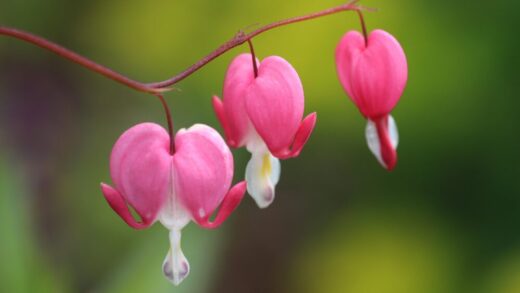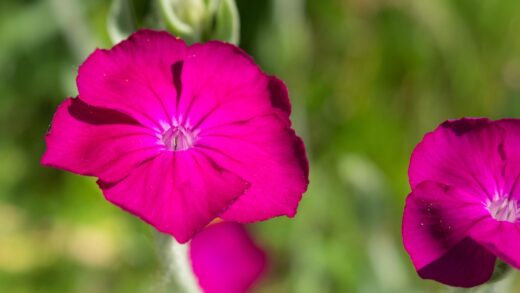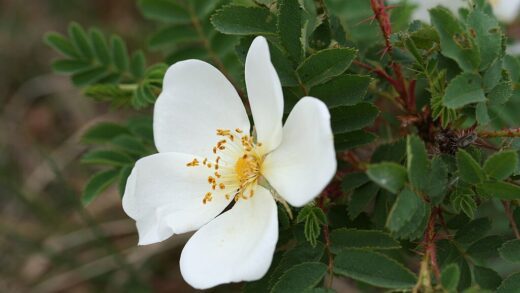The light requirements of the Asiatic dayflower are a critical factor in its successful cultivation, as the quantity and quality of light it receives directly impact its growth, flowering, and overall health. This plant demonstrates a considerable degree of adaptability, but its ideal preference lies in a balance between sun and shade. It thrives best in conditions of partial shade or dappled sunlight, which mimic the light patterns found at the edges of woodlands or in clearings, environments that are characteristic of its native habitat. Understanding and providing this specific light exposure is key to unlocking the plant’s full ornamental potential.
In these preferred conditions of partial shade, the plant is shielded from the most intense and potentially damaging rays of the midday and afternoon sun. This protection helps to prevent issues such as leaf scorch, where the foliage can become bleached, brown, and crispy due to excessive light and heat stress. Dappled light, such as that found under the canopy of a tall, open-branched tree, provides a moving pattern of light and shadow throughout the day, which is an ideal environment. This type of light exposure promotes the development of lush, deep green foliage and encourages the most prolific production of its signature azure-blue flowers.
While partial shade is optimal, the Asiatic dayflower can tolerate a wider range of light conditions, which contributes to its reputation as a resilient and sometimes weedy species. It can grow in full sun, particularly in cooler climates or if it is provided with consistently moist soil to compensate for the higher rate of water loss. However, in full sun, the foliage may appear more yellowish-green, and the plant may have a more compact, less lush appearance. Conversely, it can also tolerate quite deep shade, but in these low-light conditions, its growth may become leggy and sparse, and flower production will be significantly reduced.
Ultimately, the goal for the gardener is to find the “sweet spot” in their specific landscape that best meets the plant’s needs. Observing how the light moves across the garden throughout the day is a crucial first step in selecting the perfect planting location. An area that receives several hours of gentle morning sun followed by shade during the hottest part of the afternoon often represents the perfect compromise, providing enough light energy for robust growth and flowering while offering protection from heat-related stress.
The ideal: Partial shade
The term partial shade is often used in horticulture, and for the Asiatic dayflower, it refers to a location that receives approximately four to six hours of direct sunlight per day. Crucially, the timing of this sun exposure matters. The ideal scenario is for the plant to receive its sun in the morning hours, when the light is less intense and the temperatures are cooler. This morning sun provides sufficient energy for the plant to photosynthesize effectively and produce the sugars it needs for growth and blooming.
As the day progresses, the ideal location for the Asiatic dayflower would then be cast into shade during the midday and afternoon, typically from around noon onwards. This period of shade provides a vital reprieve from the hottest and most intense solar radiation of the day. This protection is especially important in warmer climates, where the afternoon sun can be particularly harsh. Sheltering the plant during this time helps to conserve soil moisture, reduce water loss from the leaves, and prevent the delicate foliage and flowers from being damaged.
Achieving these partial shade conditions in a garden can be done in several ways. Planting on the east-facing side of a house, fence, or other structure is a classic strategy, as this orientation naturally provides morning sun and afternoon shade. Another excellent method is to plant the Asiatic dayflower underneath taller plants, such as shrubs or small trees with a relatively open canopy. The leaves of the taller plants will filter the sunlight, creating the dappled light effect that so closely mimics the plant’s natural woodland edge habitat.
When the Asiatic dayflower is grown in its preferred partial shade environment, it will exhibit its best characteristics. The foliage will be a vibrant, rich green, and the plant will have a full, lush habit. Flower production will be abundant, with the clear blue blossoms providing a continuous display throughout the summer. The overall health and vigor of the plant will be at their peak, making it more resilient to potential problems with pests and diseases.
Effects of full sun exposure
While the Asiatic dayflower can tolerate being planted in a full sun location, which is typically defined as receiving six or more hours of direct sunlight per day, this is not its preferred environment, and it may show signs of stress. In full sun, the increased light intensity and heat place a higher demand on the plant’s resources, particularly its water supply. The rate of transpiration increases significantly, meaning the plant loses water through its leaves at a much faster rate.
To cope with this, a plant grown in full sun will require much more frequent and consistent watering than one grown in partial shade. The soil must be kept constantly moist to prevent the plant from wilting and suffering from drought stress. Amending the soil with a generous amount of organic matter and applying a thick layer of mulch can help to improve water retention and mitigate the drying effects of the sun, but a vigilant watering schedule will still be necessary, especially during hot, dry spells.
Visually, an Asiatic dayflower grown in full sun may look different from one grown in shadier conditions. The foliage often takes on a lighter, more yellowish-green color rather than a deep, lush green. The overall growth habit might be more compact and stunted, as the plant directs its energy towards survival rather than expansive growth. While it will still produce flowers, the blooming period may be shorter, and the delicate blossoms may fade or wilt more quickly in the intense heat.
In very hot climates, full sun exposure can lead to more severe problems like leaf scorch. The edges and tips of the leaves may turn brown and crispy, and in extreme cases, large necrotic patches can develop on the foliage. This damage is irreversible and detracts significantly from the plant’s ornamental appeal. For these reasons, while the plant can survive in full sun, it is generally not recommended if the goal is to cultivate a lush, attractive, and heavily flowering specimen. Partial shade remains the superior choice for optimal performance.
Growing in shady conditions
The Asiatic dayflower’s adaptability extends to its ability to grow in shady conditions as well, including locations that receive less than four hours of direct sunlight per day. This tolerance makes it a useful plant for brightening up some of the more challenging, dimly lit corners of a garden. However, as the amount of available light decreases, there are predictable trade-offs in the plant’s growth and performance that the gardener should anticipate.
The most noticeable effect of growing the Asiatic dayflower in a shady spot is a significant reduction in flowering. Photosynthesis is the process that provides the energy for a plant to produce blossoms, and with limited light, the plant will prioritize its energy reserves for basic survival and vegetative growth. While it may still produce a few flowers, they will be much sparser and less frequent compared to a plant grown in partial shade. The color of the flowers may also appear less vibrant.
The growth habit of the plant will also change in response to low light levels. It will often become “leggy,” which means it produces longer, weaker stems with more space between the leaves. This is a natural response known as etiolation, where the plant is actively stretching and searching for more light. The resulting appearance can be sparse and less attractive than the dense, mounding habit it displays in brighter conditions. The foliage, however, may be a very deep, dark green, as the plant produces more chlorophyll in an attempt to capture as much of the available light as possible.
Despite these drawbacks, the plant can still serve a purpose in a shade garden as a textured green groundcover. Its ability to tolerate low light and moist soil means it can fill in areas where other, more light-demanding plants might fail. It is important to note that in deep, dry shade, such as that found under dense evergreen trees, the Asiatic dayflower will likely struggle. It still requires the consistently moist soil that is characteristic of its native habitat to thrive, even in a shady location.
Light needs for indoor cultivation
When the Asiatic dayflower is brought indoors to be overwintered or grown as a houseplant, providing adequate light becomes the most significant challenge. The intensity of natural light inside a home is substantially lower than it is outdoors, even in the shadiest part of a garden. A location that seems bright to the human eye may still be considered low light from a plant’s perspective. Therefore, careful placement is crucial for the plant’s indoor survival.
The best possible location for an indoor Asiatic dayflower is directly in front of the brightest window in the house, which is typically one that faces south. An east-facing window, which provides several hours of direct morning sun, is also a very good option. A west-facing window can work, but the afternoon sun may be too intense and hot, so it may be necessary to pull the plant back slightly or use a sheer curtain to diffuse the light. A north-facing window will generally not provide enough light for the plant to do well.
Even in the brightest window, the plant’s growth is likely to be slower and less vigorous than it would be outdoors. It is important to rotate the pot every week or so to ensure that all sides of the plant receive some light, which will promote more even growth and prevent it from leaning excessively towards the window. If the plant starts to look leggy, with long, weak stems and small leaves, it is a clear sign that it is not receiving enough light.
In situations where sufficient natural light is not available, the use of supplemental artificial lighting can be a very effective solution. A simple full-spectrum LED or fluorescent grow light positioned about fifteen to thirty centimeters above the plant can provide the necessary light energy for it to maintain healthy growth throughout the winter. The light should be kept on for about twelve to fourteen hours per day to mimic the length of a typical summer day, which will help to keep the plant in a more active state of growth.

















